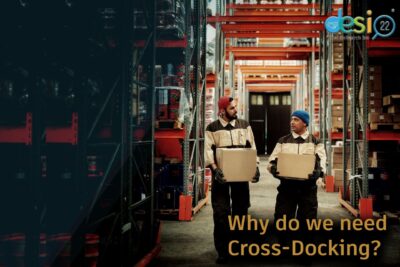Blog Top 5 reasons to choose Cross-Docking

What is Cross-Docking?
Cross docking is a logistics process that is becoming increasingly popular for businesses across many industries. This process involves the efficient transfer of goods from one mode of transportation to another and can be used to reduce costs, improve efficiency, and improve customer satisfaction.
Here are the Top 5 reasons to choose Cross-Docking in your logistics operations.
- Streamlined shipping process: Cross docking helps streamline the shipping process by allowing goods to be moved quickly and efficiently from one mode of transportation to another. By eliminating the need to move goods through multiple warehouses or retail locations, you can reduce the amount of time it takes to ship goods, improving customer satisfaction and reducing costs.
- Reduced storage costs: By using cross-docking, you can reduce the amount of storage space you need to store goods. This can significantly reduce storage costs, as you won’t need to purchase or rent additional warehouse space.
- Improved customer service: Cross docking helps ensure that goods are delivered to customers quickly and with minimal delays. This can improve customer satisfaction and loyalty, as customers are more likely to be happy with their purchases if they receive them quickly.
- Improved order accuracy: By using cross-docking to move goods from one place to another, you can ensure that orders are filled accurately. This can help reduce the number of returns, refunds, and customer complaints, which can save you time and money.
- Increased efficiency: Cross docking helps reduce the amount of time needed to move goods from one location to another. This can free up resources and personnel that can be used for other areas of your business.
Cross docking is an invaluable tool for businesses looking to improve their logistics operations. By using this process, you can reduce costs, improve customer service, increase order accuracy, and increase efficiency. If you’re looking to improve your business’s logistics operations, consider incorporating cross-docking into your process.
